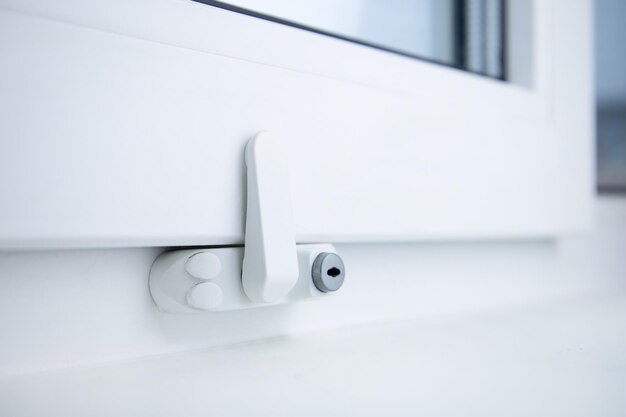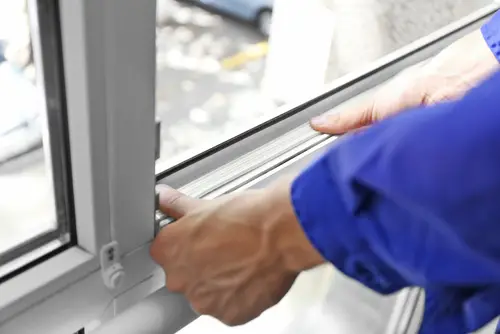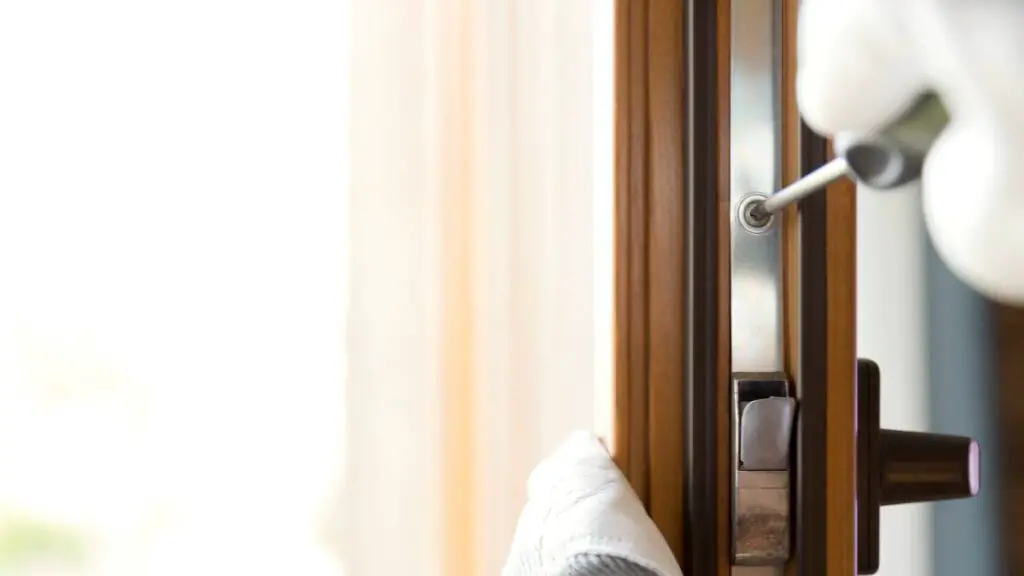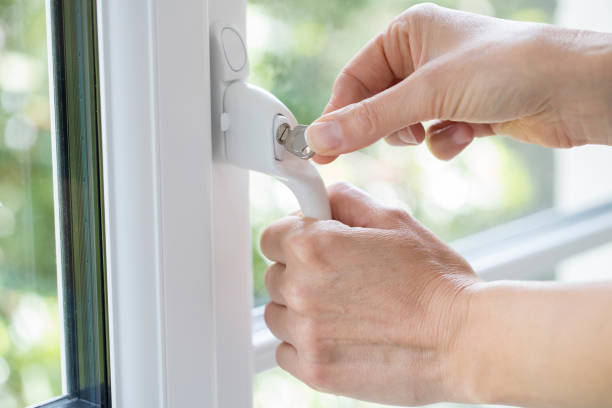Installing sliding window locks can be a valuable step to enhance the security of your home. These locks provide an additional layer of protection, deterring potential intruders and giving you peace of mind.
This guide will walk you through the process of installing sliding window locks, ensuring you have the knowledge and confidence to take this important home improvement step. Let’s delve into the specifics of how to install sliding window locks.
Importance of Window Locks for Home Security
Home security is a paramount concern for homeowners and renters alike. An integral part of a comprehensive home security setup involves securing all potential entry points, and windows are no exception.
Windows, particularly those on lower floors, can be attractive access points for intruders. Therefore, securing them with window locks is crucial.
Sliding window locks provide an effective deterrent against potential break-ins. They not only physically impede unauthorized entry but also act as a psychological deterrent, as the visible presence of window locks can dissuade potential intruders.
Furthermore, in the event of an attempted break-in, window locks can save valuable time, allowing you to alert authorities.
Moreover, sliding window locks also provide safety benefits within the home, especially in households with young children. They limit the extent to which windows can be opened, preventing falls and adding an extra layer of safety.
In essence, installing sliding window locks is a relatively simple measure that significantly boosts the security and safety of your home. By understanding their importance, homeowners can prioritize this often-overlooked aspect of home security.
Tools and Materials Needed
Before you commence the installation of sliding window locks, ensure you have all the necessary tools and materials on hand. Here is a comprehensive list of what you will need:
- Sliding window lock: Ensure you choose a high-quality sliding window lock for the best security.
- Screwdriver: This will be used to tighten the screws that secure the lock in place.
- Measuring tape: To accurately measure and mark the position where the lock will be installed.
- Marker or pencil: For marking the position of the lock on the window frame.
- Drill (Optional): In some cases, it may be necessary to drill holes for the screws.
- Screws (if not included with the lock): Ensure they are the correct size for the lock you are installing.
Choosing The Right Lock

Credit: Image by Gareva Liubov on Freepik
Selecting the right lock for your sliding window is a critical step in enhancing your home’s security. A high-quality lock can provide both practicality and peace of mind. Consider the following factors when making your selection:
Compatibility:
Not all window locks are universally compatible. Check the design and specifications of the lock to ensure it fits your type of sliding window. Some locks are designed specifically for aluminium windows, while others are more suitable for wooden or vinyl windows.
Material:
The material of the lock significantly influences its durability and resistance to force. Locks made from solid brass or hardened steel provide excellent resistance to breaking or being picked, ensuring optimal security.
Ease of Installation:
While most sliding window locks are simple to install, some may require additional tools or modifications to your window frame. Choose a lock that can be installed using the tools you have on hand, or be prepared to invest in any necessary tools.
Keyed vs. Non-keyed:
Keyed locks provide an additional layer of security, but they also require you to keep track of the key. Non-keyed locks can be locked and unlocked from the inside without a key, making them more convenient but potentially less secure.
Price:
While it may be tempting to go for the cheapest option, remember that the quality and reliability of your lock is paramount. Consider it an investment in your home’s security and choose a lock that offers the best combination of price and performance.
Researching various brands and reading customer reviews can also provide valuable insights into the performance and reliability of different locks. Making an informed decision will ensure that you choose a lock that is durable, reliable, and suitable for your specific needs.
Measuring and Marking

Before installing your sliding window lock, it’s crucial to measure and mark the correct position. Follow the steps below to ensure accurate placement:
Inspect the Window:
Examine your sliding window. The lock should ideally be installed on the moving part of the window to prevent it from being slid open.
Positioning:
The lock should be placed in such a way that the window can open enough for ventilation, but not wide enough for an intruder to gain access. A position approximately 5 inches from where the sliding part of the window meets the fixed part usually proves adequate.
Measure:
Use a measuring tape to measure this distance from the edge of the window frame to the point where you want to install the lock.
Mark the Position:
Once you’ve determined the ideal position for the lock, use a pencil to mark this point on the window frame. This will serve as your guide during the installation process.
Double-check:
Before proceeding to fix the lock, double-check your measurements to ensure they are accurate. Misalignment can hinder the proper functioning of the lock, so it’s crucial to get this right.
Installation

Step 1: Gather Your Tools
Before starting the installation process, ensure you have all the necessary tools at hand. These may include a drill, a set of screwdrivers, a pencil for marking, measuring tape, and of course, the lock itself.
Step 2: Position the Lock
Position the lock on the window in line with the marking you made. It should sit flush on the window frame for optimal performance. Make certain the lock is correctly oriented, as indicated in the manufacturer’s instructions.
Step 3: Mark the Screw Holes
With the lock in place, mark the positions of the screw holes on your window frame by using a pencil. This will guide you when drilling the holes for the screws.
Step 4: Drill Pilot Holes
Use your drill to create pilot holes where you’ve marked the screw positions. These pilot holes will make it easier to screw the lock into place and ensure the screws go in straight. Be careful not to drill too deeply.
Step 5: Fix the Lock
Align the lock with the pilot holes, then use your screwdriver to fix it in place. Ensure the screws are tight, but be careful not to overtighten as this may strip the holes or damage the lock.
Related Topics:
Testing The Lock
Testing the Lock
After successfully installing your sliding window lock, it’s essential to ensure it’s working correctly. Start by closing the window fully. Engage the lock by sliding or rotating the mechanism, depending on the model. Then, try to open the window gently.
If the window remains in place and doesn’t slide open, then the lock is functioning as it should.
Conduct a Stress Test
For added assurance, conduct a stress test. Apply more force than usual in an attempt to slide open the window. However, remember not to apply too much force as you risk damaging the window or lock.
If the window remains stationary, the lock is installed correctly.
Disengaging the Lock
Finally, disengage the lock and attempt to slide the window open. It should slide open with ease. If it does, this confirms that the lock is not only functioning correctly when engaged but disengages properly to allow the window to operate normally.
This comprehensive test will ensure that your lock is installed correctly and functioning as intended.
Maintenance Tips

Regular Cleaning
It’s essential to keep your sliding window lock clean to ensure optimal performance. Wipe down the lock with a damp cloth and mild soap to remove any dust or grime that may have accumulated.
Avoid using harsh chemicals as these can cause damage to the lock’s finish and components.
Lubrication
Lubricating your sliding window lock regularly can help maintain its smooth functionality. Use silicone-based lubricants, which are safe for use on most surfaces, and lightly apply to the lock mechanism.
Remember, a little goes a long way.
Inspection
Perform regular inspections of your lock to identify any signs of wear and tear. Check for loose screws, misalignment, or rusting. If you notice any of these issues, it is recommended to address them immediately as they can impact the lock’s performance and integrity.
Avoid Forceful Handling
Avoid forcing the lock when engaging or disengaging it. Excessive force not only risks damaging the lock but can also compromise the window’s integrity. If the lock is resistant, it may need cleaning or lubrication rather than force.
By adhering to these maintenance tips, you can extend the lifespan of your sliding window lock and maintain its functionality, ensuring better home security.
Conclusion
To recap, installing a sliding window lock involves several steps: identifying the correct type of lock, marking the position, drilling holes, and securing the lock onto the window.
Regular maintenance, including cleaning, lubrication, inspection, and gentle handling, can help ensure the lock’s longevity and optimal performance.
In closing, it’s important to underline the significance of having a secure sliding window lock. Not only does it provide an added layer of security against potential break-ins, but it also offers peace of mind knowing that your home is safer.
Remember, the key to maintaining a durable and functional sliding window lock lies in the routine attention and care you devote to it.
FAQs
What types of sliding window locks are there?
A1: There are several types of sliding window locks available on the market. Some popular choices include screw-on locks, which are attached directly to the window frame, and track locks, which are placed onto the track that the window slides on.
The best type for you will depend on your specific window design and your security needs.
I’m having trouble installing my sliding window lock. What could be the problem?
Difficulty during installation could be due to several factors. It’s possible that the lock is not compatible with your window, or the window’s track might not be clean. Misalignment between the holes drilled and the lock mechanism could also be an issue.
If you’ve checked for these potential problems and still can’t install the lock, it may be best to consult with a professional.
How often should I inspect my sliding window lock?
Routine inspections are key to ensuring your sliding window lock remains effective. We suggest checking your lock at least once a month. Look out for any signs of wear and tear, such as rusting or loose screws. If any issues arise, address them promptly to maintain the lock’s functionality.

1 thought on “How To Install Sliding Window Locks: Home Security”